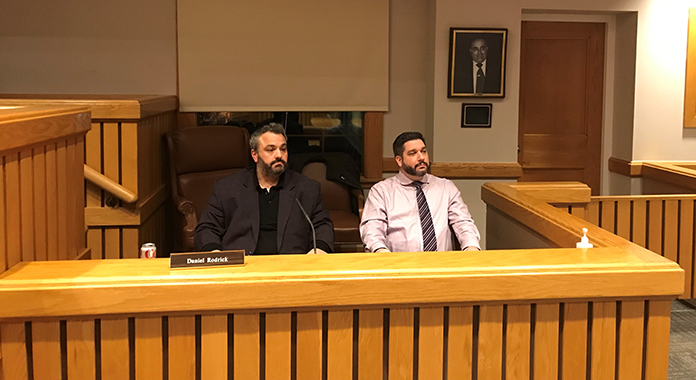LONG BEACH ISLAND – Beach enthusiasts overwhelmingly appreciate plenty of sand between their toes as they sunbathe and build sandcastles. However, sand offers more than just recreational benefits for Long Beach Island – it’s a crucial defense against coastal erosion and storm damage.
As the island’s shoreline continues to erode, maintaining adequate sand levels is vital for preserving its natural beauty and protecting homes and infrastructure. To address this pressing need, the U.S. Army Corps of Engineers (USACE) has awarded a $54.4 million contract to Great Lakes Dredge & Dock Company to restore and safeguard the island’s beaches.
“Great Lakes Dredge & Dock Company plans to start dredging/placement operations at some point during the week of September 23- 27,” explained Steve Rochette, Public Affairs Officer for the USACE Philadelphia District. “They will start in Beach Haven and work towards Holgate. Work would then shift to Harvey Cedars.”
Rochette described the work schedule for the project as a “moving target,” citing variables such as weather, equipment, and dredging productivity.
Restoring Beaches
This initiative is part of the Barnegat Inlet to Little Egg Inlet Coastal Storm Risk Management Plan. It aims to rebuild eroded beaches and dunes, which will serve as protective barriers against storm surges and high tides. The project also includes repairing dune crossovers, installing fencing, and planting native dune grasses.
A collaborative effort among the U.S. Army Corps of Engineers’ Philadelphia District, the New Jersey Department of Environmental Protection, and Long Beach Island municipalities is driving the beach replenishment project forward. This partnership will see the federal government covering 65% of the project’s expenses, while state and local governments will fund the remaining 35%. Ocean County has picked up the municipalities’ share, contributing nearly $5 million, broken down as follows:
Long Beach Township: $2,253,597
Harvey Cedars: $2,068,915
Beach Haven: $656,878
Photo by Stephanie Faughnan
Ocean County Commissioner’s Deputy Director Gary Quinn said that county officials decided to mirror the funding used for the beach replenishment program designed to tackle shoreline erosion from the Manasquan Inlet to the Barnegat Inlet.
Quinn said that given the deep connection between Ocean County’s coastal economy and its beaches, maintaining beach health is essential for both residential and business interests. By restoring the shoreline, the project is expected to enhance environmental conditions and support the economic stability for those affected by the pandemic.
Ocean County’s financial contribution to the project has been allocated from federal American Rescue Plan Act (ARPA) funds.
The replenishment effort will take approximately 180 days to complete. The process involves using hopper dredges to remove more than 1.75 million cubic yards of sand from offshore borrow areas.
“It then transits back and forth between a pump out buoy located a few hundred yards off the beach,” said Rochette. “The sand and water mix are then pumped through pipe onto the beach.”
Photo by Stephanie Faughnan
“Bulldozers and other construction equipment will then grade the materials into the designed dune and berm system,” he added.
Beach replenishment goes by a few different names, including beach nourishment and beach restoration. The last time the Army Corps of Engineers conducted dredging/placement on Long Beach Island was in 2018. And the fact that it’s time for more work is not entirely unexpected.
As far back as 1990, a couple of experts from Duke University’s Department of Geology conducted a research project entitled “An Analysis of Replenished Beach Design Parameters on US East Coast Barrier Islands.”
Researchers concluded that “most US East Coast replenished barrier islands experienced durabilities of less than five years…with only 12% lasting longer than five years.” The study also determined that “replenished beaches are much more unstable than their natural predecessors.”
Beach replenishment is a critical investment for coastal communities. Studies by the American Shore & Beach Preservation Association indicate that every dollar spent on sand replenishment can prevent hundreds in future storm damage. Although replenished beaches often erode faster than natural ones, these projects provide essential short-term protection and help reduce the risk of costly damage to homes and infrastructure.
The post $54M Beach Project Beginning On LBI appeared first on Jersey Shore Online.


